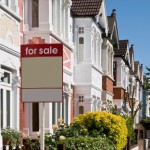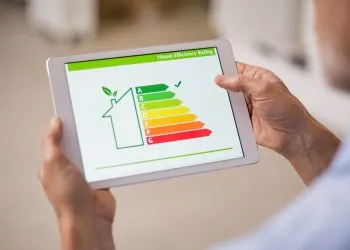Last month saw the highest July home sales on record since 2007, as the number of transactions across England and Wales surged 13 per cent on June to 90,000, the latest house price data from LSL shows. The monthly growth rate was above average as well, compared to the typical 5 per cent increase in […]
Last month saw the highest July home sales on record since 2007, as the number of transactions across England and Wales surged 13 per cent on June to 90,000, the latest house price data from LSL shows.
 The monthly growth rate was above average as well, compared to the typical 5 per cent increase in summer months.
The monthly growth rate was above average as well, compared to the typical 5 per cent increase in summer months.
Even so, the number of home sales in July 2015 was 35 per cent below that number in July 2007, when the market was last reaching a peak (120,845).
Activity in the North was the main driver for growth in July, while the market seems to be levelling off in the South, with London especially experiencing considerably lower rates of annual growth than in 2014.
Richard Sexton, director of e.surv chartered surveyors, comments:
“The property market may have moved down a gear, but house prices are still putting one foot in front of the other. These more pedestrian monthly price rises of late have nonetheless carried the average house price past the checkered flag, to a new record £279,515. Six regions of England and Wales have seen accelerations in the rate of house price growth, with East Anglia moving into the fast lane after an annual rise of 6.3%. The housing recovery is cruising along comfortably across the country, and in 27% of the local authority areas of England property prices are at new peak levels – encompassing Warrington, the West Midlands, Milton Keynes, Bristol, and Devon.
“House prices in Reading have seen the steepest rise over the past year, up 15.2%. On the route of the new London Crossrail, property values here are already stepping on the gas to capitalise on direct train lines into the City of London from 2019, and the average price for a flat has soared 20% over the last twelve months, to reach £215,000.
“After spearheading house price growth for the past five years, London has been knocked off pole position and now falls eighth out of the ten regions in England and Wales in terms of annual rises – ranking only above the North and Wales with 1.8% price growth year-on-year in June 2015. This has halved from 3.6% in May, and this downtrend is now lowering the average growth for England and Wales as a whole. London has been stalled by more aggressive graduated Stamp Duty and taxation levied at the highest rungs of the property market, plus the rising value of Sterling compared to the Euro. London property sales in the month of June were 13% lower than a year previously – and in the most expensive boroughs of Kensington and Chelsea and Westminster sales during Q2 were down 33% and 31% respectively year-on-year. However, there are some indications that we are pulling out of the hard shoulder now, and prices are rallying at these top tiers, with property values recording healthy monthly rises of 2.3% and 2.1% in Kensington and Chelsea, and Westminster.
“Overall homes sales reached 90,000 in July, a boost of 13% from the previous month. This marks the first time this year that sales levels have overtaken the equivalent month in 2014 – and is actually the strongest July since 2007, when the market was building up to its pre-crisis peak. Sales were 35% higher then, standing at 120,845 in July 2007, but activity today is certainly making inroads after being mired in the General Election.
“Turning the North-South divide on its head, the strongest sales growth has been taking part outside of London and the South East. The North and Yorkshire & Humberside have seen the fastest sales growth, with Q2 sales jumping 29% and 25% respectively on the previous quarter. It is purchases of detached properties which have seen the biggest quarterly boost – in the North, sales of this type of home increased by 41%.
“However, first-time buyer sales have hit the brake since the start of 2015, and sales of flats have seen the slowest improvement, rising just 12% during Q2. The current review of the Buy-to-Let market and measures to reduce the tax relief for landlords may help grease the wheels for first-time buyers in future, easing some of the competition with property investors. But cheap mortgage finance has been the most significant catalyst behind much of the housing recovery, and this won’t last forever. For many post-recession first-time buyers, a Bank of England base rate of 0.5% is all they’ve ever known. Rate rises will be gradual, but they are coming. Savvy buyers should be looking to make the most of them while they last, and fix for as long as possible.”















